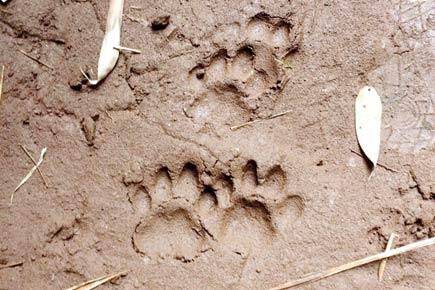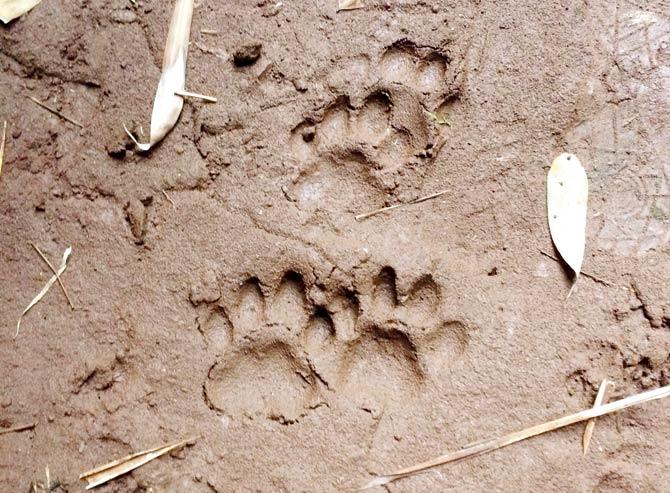The leopard has reportedly taken five dogs as prey in the last five years from the under construction building, located adjacent to the Supreme Business Park, in Powai


The adult leopard left behind its pugmarks on the basement floors
ADVERTISEMENT
Powai's most nondescript resident – a fully-grown leopard – is pawing his way back into the news. The leopard, who lives on an isolated hillock in the Hiranandani area, was yesterday spotted by a staffer in the storeroom of the building. The leopard has reportedly taken five dogs as prey in the last five years from the under construction building, located adjacent to the Supreme Business Park.
The building is next to the isolated hillock, which is thick with vegetation. “In the morning, one of our employees was going towards the storeroom when he saw a fully grown leopard. It walked in using the staircase and went towards the backside of the building. Immediately, we informed the Thane Forest Department about the same,” said an employee. The leopard has left behind its pugmarks on the basement floors.
Also Read: Mumbai: Locals spot leopard sitting on boundary wall of SGNP
Movement in summer
The sightings of the leopard on the hillock have been taking place for more than three years now and every summer, the movement of leopard increases. According to locals, this happens because there is a scarcity of water on the hill leading the leopard to walk down the hill in search of water.
However, what surprised the workers at the under-construction building yesterday was that the leopard which was earlier seen at the top of the hill is now walking four floors down towards the basement in search of food. In the last two years, it has reportedly consumed more than five stray dogs from the building.
Read Story: Caught on camera: Another leopard in Aarey Colony
Camera traps to be set up
The Territorial Range of Thane FD and the leopard rescue team from SGNP visited the area and the camera traps would be soon installed in the area. The authorities are also planning to set up a trap cage in the area after getting the required permission from the state’s principal chief conservator of forests.
 Subscribe today by clicking the link and stay updated with the latest news!" Click here!
Subscribe today by clicking the link and stay updated with the latest news!" Click here!







